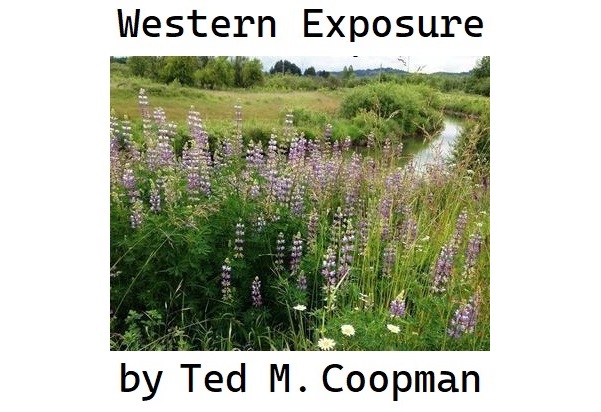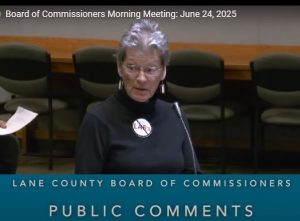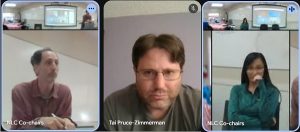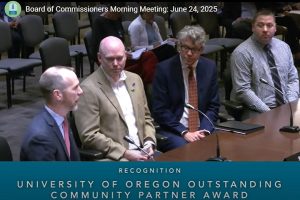The missing muddle
7 min read
by Ted M. Coopman
Once again, the city council is back to discussing middle housing. Once again, the public is met with denial and arrogance as both city planners and the city attorney refuse to admit the city erred in enacting its own middle housing ordinance.
This latest waste of council time and taxpayer money is indicative of a long-running pattern of denial and arrogance. When will the council demand accountability?
The fact is, this HB 2001 appeal and the many other appeals of land use decisions—most egregiously, the multiple lost appeals of the city’s accessory dwelling unit ordinance—were completely avoidable. Critics warned the city they would appeal and shared in advance the minor changes that would have kept them out of court. These warnings were ignored.
The city is perfectly willing to spend taxpayer money to fight it out. This “win at any cost” strategy played out in the refusal to accept constructive critiques during public process and in the refusal to alter any plan in response to public feedback.
Planning staff never changes anything, or addresses public concerns, unless demanded by city council or the courts. It is no wonder the public feels the city is out of touch.
No one appeals land use decisions on a whim. It is expensive and time-intensive, especially if you don’t have the deep pockets of a developer or a public advocacy group. The planners’ standard response that “all land use decisions get appealed” is ridiculous.
The tendency to demonize criticism as “obstructive” or appeals as “frivolous” is disingenuous. The validity of the issues raised with Eugene’s middle housing ordinance were confirmed by the court decision.
Staff was wrong – period. The city had to write a check to pay our attorney. Those fees and staff wages came out of the taxpayers’ pockets. Our personal hours of labor on this appeal were uncompensated and came out of our own pockets.
Assistant City Attorney Lauren Summers was quoted in the Register-Guard: “We have provisions … that say that development, including middle housing development, but also including single-family homes and other types of development, is prohibited if the applicant can’t demonstrate that the property can be served.”
This is simply denial. It is exactly the argument the court rejected. Whatever the city’s real or imagined “provisions,” they were deemed inadequate by the court in its ruling.
Further, city planning newsletters have obscured the inconvenient facts, despite being called on accuracy. Whether ignorant of the law or intentionally misrepresenting the truth, this doesn’t reflect well on the city.
The last two EUG Planning newsletters stated: “On October 12, 2023, based on the Court of Appeals consideration, LUBA remanded the City’s decision. In this case, a remand from LUBA renders the City’s Ordinance ineffective until the City Council adopts a new Ordinance that addresses the remand. As such, Ordinance 20667, in its entirety is no longer in effect as of October 12, 2023.”
Under state law, if a land use ordinance is overturned on appeal, it means that the original ordinance was unlawfully adopted and the ordinance in its entirety was never in effect.
When a law is appealed after passage, that law is not enforced until the appeal is decided—for obvious reasons. That means the city was under the state’s default Model Code (HB 2001) from July 1, 2022 onward.
The city’s ordinance greatly exceeded the state requirements. This means that any permits granted based on Ordinance 20667, unless compliant with the model code, were unlawful and cannot/were not legally executed.
If, like Springfield, Eugene had simply adopted the mandated state code on middle housing, we would not be in this mess. Springfield wisely decided to do what it had to do, skip all the public drama, and then see how it worked before amending it. But Eugene always wants to have its own special boutique way regardless of the costs.
Moreover, it is outrageous that the appellants had to waste time arguing for requiring adequate infrastructure to support development. Is there anything more basic in land use than that simple concept?
Stop (not) making sense
Piecemeal analysis of infrastructure carrying capacity in response to developer requests serves no one.
Investments in property are long-term bets. The current system sets up a situation where development and investment are “first-come, first-served” and if two developers acquire property on the same street, the second one to file for permits may be out of luck and out a considerable sum of money. That is no way to plan. It creates unnecessary uncertainty as well as potential liability.
But wait, it gets worse.
Eugene placed its faith on the existing Public Facilities and Services Plan (PFSP). The PFSP is based on our existing infrastructure and what it can support. However, the last integrated update to the PFSP was in 2011 (with a few minor updates in 2017). An update with some amendments is currently in process. A draft was supposed to be released in fall 2023, but as of January 2024, it has still not appeared. Suffice to say, it was not ready when Ordinance 20667 was adopted in 2022, let alone when drafted in 2021.
You read that right – in 2021 the city undertook the most significant zoning changes since the creation of zoning not only with information from an outdated assessment of our infrastructure but knowing that a revision of that assessment was in process and would not be available until fall 2023 at the earliest. The current “fix” proposed by staff in response to the appeals court remand was also done without the benefit of any new data.
Why would anyone do that?
You may also wonder, if the current PFSP was good enough to base such a major change to residential zoning on, why make the effort to revise it?
Eugene neighborhoods were designed and developed with infrastructure to support single family homes on 4,500 square-foot lots. Eugene’s middle housing ordinance has the potential to increase density by a factor of five. Can an outdated PFSP accommodate this magnitude of change? The Court of Appeals answer was a resounding and explicit “no.”
Are we willing to roll the dice on a “feeling” that we have adequate infrastructure to meet “most needs” over the next five years – a prediction made 12 years ago? I would add that the impacts of climate change on stormwater and other infrastructure, let alone the demands of the push for electrification, were not even under discussion at that point.
2011 might as well be 1911 for everything that has happened since then. It is unclear if any current amendments address any of these challenges—because the public has not seen them.
The massive increases in density mandated by the state and even greater density enacted by the city will put enormous pressure on our infrastructure. It seems obvious that the Public Facilities and Services Plan needs to be significantly updated so we know what we have, what housing we can add, and where as well as what investments in infrastructure are required to meet our housing goals.
Research and reason instead of rhetoric
I urge the Eugene City Council not to be, yet again, sucked into the simplistic debate sold as “staff and housing advocates versus obstructive NIMBYs.” No one seriously involved in this debate, especially me, has ever argued against more density, more middle housing, or the need to build more inventory. That is not the argument and has never been the argument. Despite the concerted efforts of certain parties to frame it as “for or against,” it has always been about “how.”
We can and should build more and more densely. My Jefferson Westside neighborhood is almost three times as dense as the Eugene average, with the city’s largest inventory of middle housing. I do not have a problem with density. The question is, and has always been, how we can accomplish this practically and in ways that ensure neighborhoods are places that people want to live in—not just human storage.
The either/or frame is intentionally used to distract us from looking at “how,” to delegitimize critics, and to avoid reasonable questions or inconvenient analysis.
Much like the natural gas ban fiasco, we find ourselves back at square one after spending a lot of money we don’t have and generating a lot of public drama and animosity we did not need. I urge the council to direct staff to make the simplest fix by adopting the model code definition and rule regarding “sufficient infrastructure” in response to the appeals court remand.
Better yet, throw out the mess of our bespoke middle housing code and just adopt the model code. That will allow us to finish updating the Public Facilities and Services Plan in a way that answers our density questions and shows us a path forward. That seems like a better use of staff time and taxpayer money.
Western Exposure is a semi-regular column that looks at issues and challenges from a West Eugene perspective – a perspective that is often ignored or trivialized by city leadership and influential groups and individuals largely based in south and east Eugene.
Western Exposure rejects the fauxgressive party line, performative politics, and “unicorn ranching” policy in favor of pragmatism focused on the daily experiences of residents and small businesses in Eugene—and West Eugene in particular.
Ted M. Coopman has been involved in neighborhood issues since 2016 as an elected board member, and now chair, of Jefferson Westside Neighbors and has 30+ years experience as an activist and community organizer. He earned a Ph.D. in Communication (University of Washington) and served on the faculty at San Jose State University from 2007 to 2020.
Ted’s research on social movements, activist use of technology, media law and policy, and online pedagogy has been published and presented internationally and he taught classes ranging from research methodology to global media systems. He and his spouse live in Jefferson Westside with an energetic coltriever and some very demanding and prolific fruit trees.





